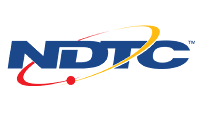What are Broadband Consumer Labels?
Broadband Consumer Labels, also known as Broadband Nutrition Labels, were created by the federal government to give consumers an easy way to compare different broadband services. According to the FCC, the labels “are designed to provide clear, easy-to-understand, and accurate information about the cost and performance of high-speed internet services. The labels are modeled after the FDA nutrition labels and are intended to help consumers comparison shop for the internet service plan that will best meet their needs and budget. Internet service providers that offer home, or fixed, internet services, or mobile broadband plans are required to have a label for each standalone service plan they offer.”
What Information is on a Broadband Consumer Label?
Monthly Price: The base monthly price before additional charges and monthly fees are added.
Length of Contract: The contract term, or number of months, the contract lasts. Along with a link to the contract terms.
Provider Monthly Fees: Fees required by a provider to receive service, added to a customer’s bill every month.
One-Time Fees: Fees that are assessed once, often when service is installed or begins.
Early Termination Fee: Fee a provider charges a customer who ends service before their contract expires.
Government Taxes: Vary by state and local jurisdictions.
Discounts & Bundles: Providers may offer certain discounts or bundles when subscribing to additional services. Providers must display a label for their standalone broadband services, but may provide further information on bundled services via a link in this section of the label.
Privacy Policy: The internet service provider’s privacy policy information.
Typical Download Speed: The speed that data arrives to a device, measured in Mbps. Higher numbers represent faster speeds. Lower speeds may affect the quality of video, gaming services, and other applications.
Typical Upload Speed: The speed that data is sent from a device to another device, measured in Mbps. Higher numbers represent faster speeds. Lower speeds may affect applications that transmit large amounts of information.
Typical Latency: The time it takes for data to travel from one endpoint to another across the internet, measured in milliseconds. Lower latency indicates a higher quality connection.
Data Included with Monthly Price: The amount of data the plan provides before extra fees are charged or performance is decreased.
Network Management: How an internet service provider manages the data that moves across their networks.
Customer Support: Ways a consumer may contact the internet service provider for additional information.
Where Can NDTC Broadband Consumer Labels Be Viewed?
NDTC broadband labels can be viewed online at gondtc.com/internet; they are also available in our main office.
Current NDTC customers can view the label of their broadband service by logging in to their SmartHub online account here.
For more information about Broadband Consumer Labels, visit fcc.gov/broadbandlabels.




